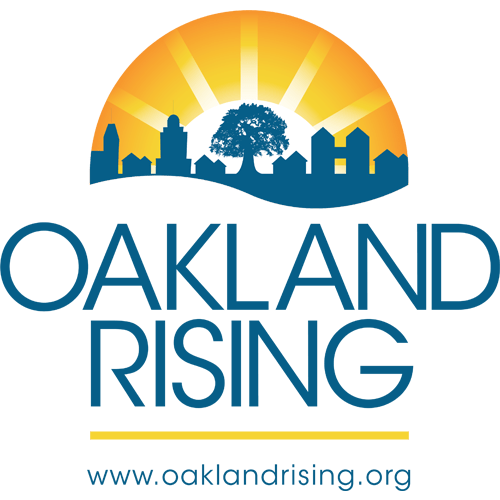St. Mary’s Center
The most crucial issue facing Oakland today is our disconnect from one another. When we see ourselves as contrast, our city starts to get smaller and fear starts to increase. Yet when we stand with people previously overlooked, we start to see ourselves differently too. We start to understand issues from a perspective not mentioned in the media. We get to know people and the odds they face that we had not even imagined. And we start to see ways we can support each other to influence different outcomes.

Painting by: Rodney Bell
This – standing with the invisible – is what happens at St. Mary’s Center (SMC) each day. Most of the elders have lived in fear and isolation because of homelessness, depression, bankruptcy, food insecurity, abuse, etc. Children at our Preschool would otherwise be relegated to an inadequate education not because of their abilities but because of where they live, not having books in their home and limited English. A life so stark and alone is difficult to journey out of. At St. Mary’s elders and children do.
Being at the end of a rope is either an opportunity for change or a fall into an abyss. At SMC, people start to realize they are not alone, many of the circumstances are not their fault, and if they want to change their situation they can.
While many public policies make change difficult (a lack of affordable housing, good neighborhood schools, access to nutritious food in poor communities, safety net programs, employment opportunities, funding for substance abuse and mental health programs, …), much of the focus at SMC is on the individual and how to set a different course. Parents of preschoolers appreciate the training on how to help their children with school work. Elders staying in the winter shelter get tools in the wellness meetings to deal with anger management, write poetry and do art.
SMC has a reputation as a place where people move out of crisis and into realizing they have something to give to the larger community. Comprehensive services that lead the elder to improved outcomes in health, housing, and money management are easily accessed at one location. Support groups, creative arts, communal meals, cultural celebrations and providing testimony to improve public policy are ways SMC engages the elder to learn about themselves and connect to each other.
While violence is Oakland’s top story, it really dismisses the myriad of issues that face us. The economy has taught some of us lessons that the poor in our community are well aware of. Not having housing, employment, savings and education diminishes dreams. As more people experience a foreclosure, getting laid off from a job that leads to pre-mature retirement, a son moving back home with mountains of debt and no job, or a loved one drinking more to deal with the stress – this disconnect between us starts to fade.
Our lives have become fragile in a way that prosperity can hide. What we do with this opportunity will largely help influence our ability as residents to connect with each other. When you tutor a child at an underperforming school, cook and serve a meal to an elder in a shelter, ride the bus and attend AC Transit hearings on increasing fares, visit a memorial on a street corner, we cross a threshold of understanding and connection and help create the Oakland we imagine. By Katrina Brekke-Miesner
St. Mary’s Center Our mission is to be a responsive community of healing, hope and justice, providing comprehensive services to vulnerable and low income elders and preschool children. We encourage our clients to be self-reliant and engaged in achieving their personal goals, in order to improve the health and well-being of our community.
St. Mary’s Center www.stmaryscenter.org
925 Brockhurst Street Oakland, CA 94608 (510)923-9600
Executive Director: Carol Johnson
Advocates for Hope & Justice: Elena Berman
